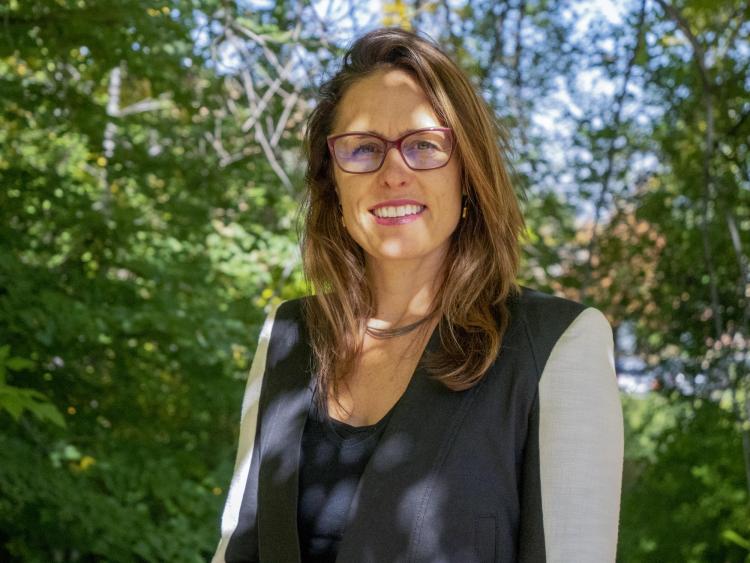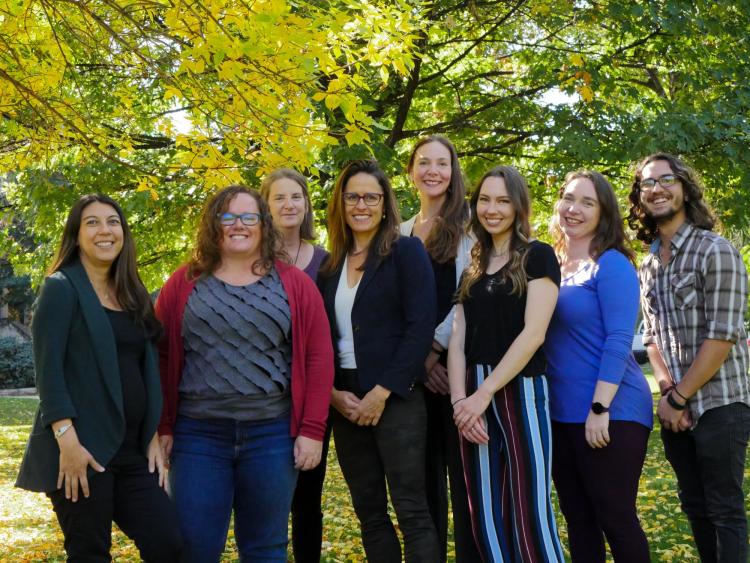Amid youth mental health crisis, CU Boulder center teaches grown-ups how to help
From mass shootings and natural disasters to a global pandemic, youth today face unprecedented challenges that can take a toll on mental health. Yet the grown-ups around them are often ill-equipped to help.
About 37% of Americans live in areas with a shortage of mental health professionals, and only a fraction of counselors are trained to work with traumatized youth and their families. In Colorado alone, two-thirds of educators are considering leaving the field. And about 40% of parents say they’re worried about their child’s depression or anxiety but don’t know what to do.
Enter the Center for Resilience and Well-Being.

We empower adults to show up as their best so the youth they support can flourish.”
–Monica Fitzgerald
Through partnerships with school districts, mental health agencies and community groups, the new CU Boulder center provides research-based training for educators and parents on how to support struggling young people while still tending to their own wellbeing. It also trains mental health professionals in trauma-focused treatments in hopes of addressing a massive workforce shortage already leaving some youth without the care they need.
“We empower adults to show up as their best so the youth they support can flourish,” said CRW Director Monica Fitzgerald, a clinical psychologist and senior research associate with the Institute for Behavioral Science.
The RISE of resilient schools
While the Center for Resilience and Well-Being (CRW) formally came to be in January, Fitzgerald and her team have been working together nearly 15 years, and in local schools for six via the Resilience in Schools and Educators (RISE) program.
Aimed at promoting “trauma-responsive” school climates, the program has trained more than 4,000 educators in 50 schools across 27 Colorado districts with workshops and one-on-one coaching. They cover everything from how teachers can tend to their own social and emotional wellbeing to how they can create new rituals and routines in their classroom and better connect with students, including those they’ve struggled to connect with.
“Educators do not have to be therapists to be effective supporting youth mental health,” said Fitzgerald, noting that adults often assume they need to “stay in their lane.”
“When they simply check in with youth to see how they are doing and show that they see, hear and appreciate them—this is a critical step.”
Among the program’s early participants was Essie Hengeveld, who worked as a special education teacher at Fairview High School for nine years.
Long before the pandemic, with wildfires, floods and school shootings on the rise, she started seeing tensions rise in her classroom. When classes returned to in-person learning after the lockdown, things escalated.
“I felt like the pandemic raised the stakes and really sucked the fun out of much of what we were doing,” she says, referencing high rates of compassion fatigue and burnout across the teaching profession.
The RISE training differed from others she’d seen: It centered around the well-being of the adults first, much like flight attendants encourage passengers to put their own oxygen mask on before helping their children.
For instance, in what has become a trademark symbol of the program, RISE encourages educators to literally put their hand to their heart, breathe deep and pause before reacting.
“This is critical for teachers who are trying to manage their responses in an increasingly chaotic and demanding space,” said Hengeveld, who went on to become a RISE facilitator at Fairview, and is now RISE program manager for CRW.

The Center for Resilience and Well-Being team members
Other program participants say it has helped them see even the most challenging behaviors in a new light, as a form of communication, and view them with curiosity and warmth rather than judgment.
“When one of my students ran away from my class and hid…I realized that I felt so frustrated and that I was taking his actions really personally when they really had nothing to do with me,” recalls one participant. “Instead of chasing or yelling, I sat down in the hallway and waited for him to emerge and invited him to sit with me. He was able to tell me that he was feeling so mad...It felt better for both of us.”
The program also helps educators connect with one another for support—offering a social lifeline in a profession that can feel isolating—and get a better handle on when and how to seek professional help for themselves or their students. Let’s Connect developed by Fitzgerald and CRW colleague Kimberly Shipman, provides similar offerings to families, often for free.
“The research is clear,” said Hengeveld. “One of the most effective things you can do to promote resilience in youth is to foster healthy relationships with caring adults. But the adults need support too. We help them put their mask on.”
Feeding the workforce pipeline
Some youth will inevitably need professional help. And those professionals sometimes lack needed skills, said Fitzgerald.
“We have a massive shortage of child and adolescent mental health professionals and psychiatrists,” she said, noting that young people are sometimes turned away by counselors who don’t feel equipped to help high-needs youth, ultimately ending up in the emergency room.
Since 2009, Fitzgerald and her colleagues have trained nearly 9,000 mental health professionals, from school counselors working with youth traumatized by the 2022 Marshall Fire to therapists working with survivors of the 2011 Tsunami in Japan.
“Family therapy is really challenging,” says Tess Stoops, a therapist with Mental Health Partners, whose team has been trained by CRW faculty in trauma-focused family interventions. “You’re working with several people with a lot of different things going on in a system where their interactions are all linked. It’s hard to know where to start. These trainings provide a roadmap.”
With all this work and a staff of 12 now housed within one center, CRW hopes to expand its reach via more online videos and web-based toolkits for the public, while studying which interventions could work best to address the ongoing youth mental health crisis.
As the name suggests, it all starts with resilience, said Fitzgerald.
“Fires are going to happen. Pandemics are going to happen. But if we can build resilient communities and a trained mental health workforce, we can have huge impact on what happens next,” said Fitzgerald. “I have a lot of hope.”


